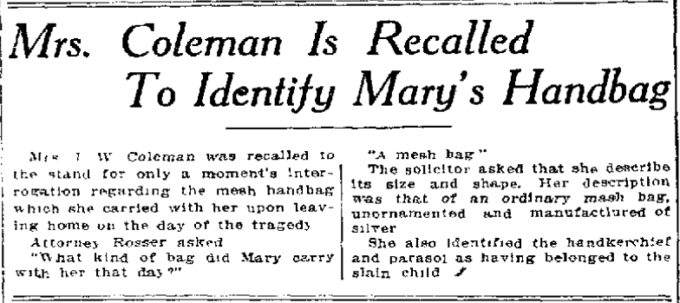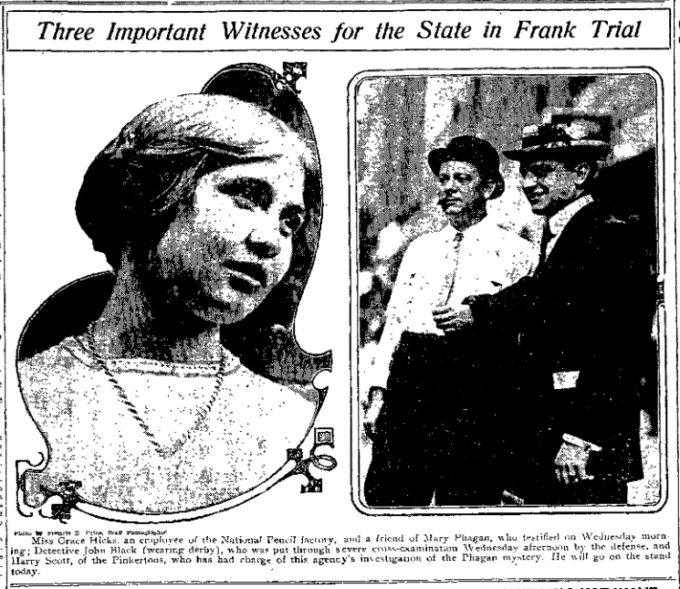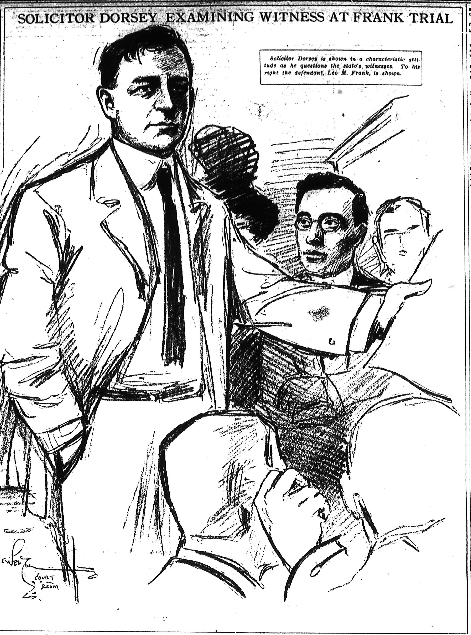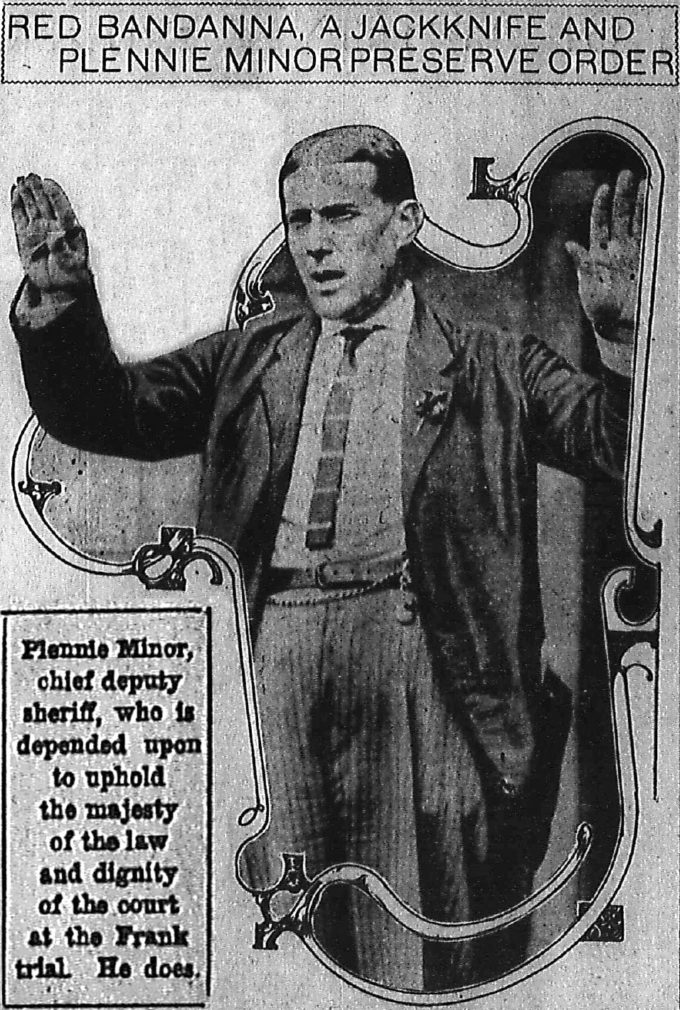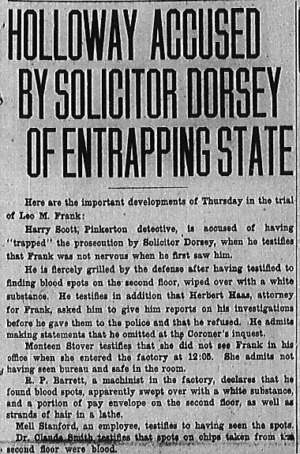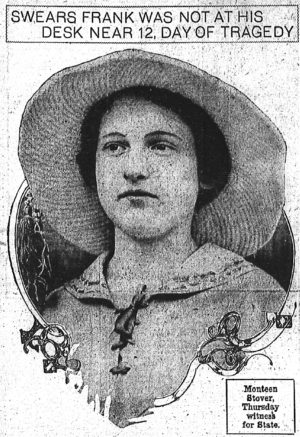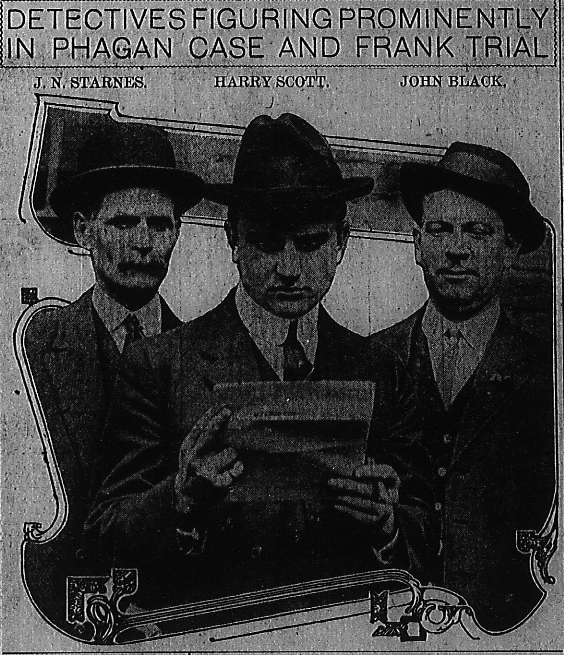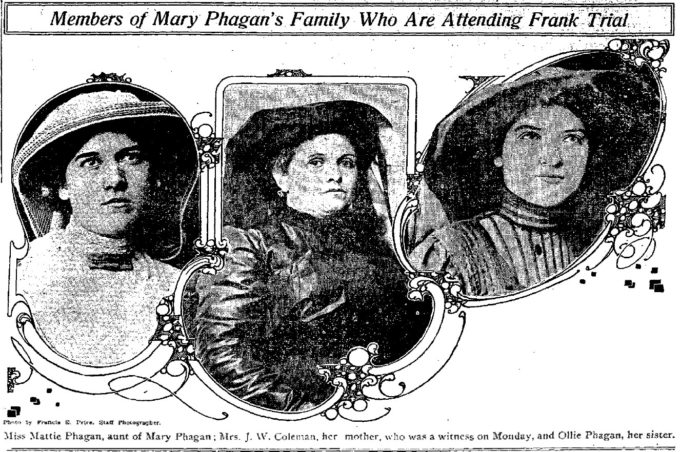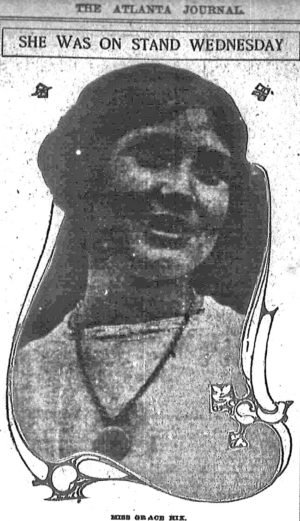Another in our series of new transcriptions of contemporary articles on the Leo Frank case.
Atlanta Constitution
July 31st, 1913
Detective John R. Black, the officer who went in Rogers’ machine from the factory to Frank’s residence on the Sunday morning that Mary Phagan’s body was discovered, was next put up by the state. He took the stand at 11:45 o’clock, and was still there when court adjourned for lunch.
In answers to Solicitor Dorsey’s questions he said he had been on the police force for six years and previous to that had worked as n cooper for the Atlanta Brewing and Ice company.
“Do you know any of the directors of this company?” began the solicitor, when he was quickly interrupted by the defense. Despite Mr. Dorsey’s claim that he had a material end in view, the judge ruled with the defense and without making further ado the solicitor started another line of questions.
Black told how he had been waked up at his home on that Sunday morning and told to report at headquarters and how, after a talk with Lee at the station, he had gone to the pencil factory and from there to Frank’s house with Rogers.
He told practically what Rogers had said about Mrs. Frank’s appearance at the door and of Frank’s stepping from behind a portiere curtain in the hall.
“He came out before I got through talking with Mrs. Frank,” said the detective.
Continue Reading →

